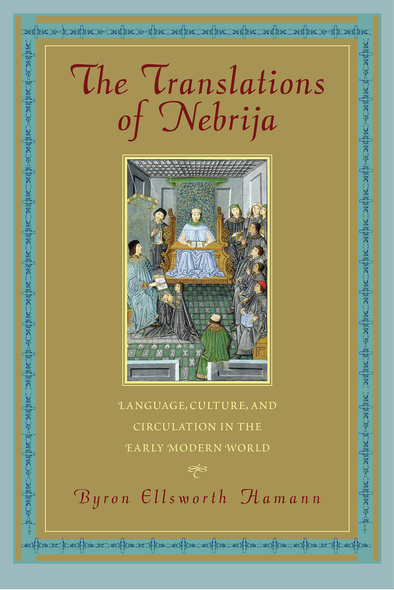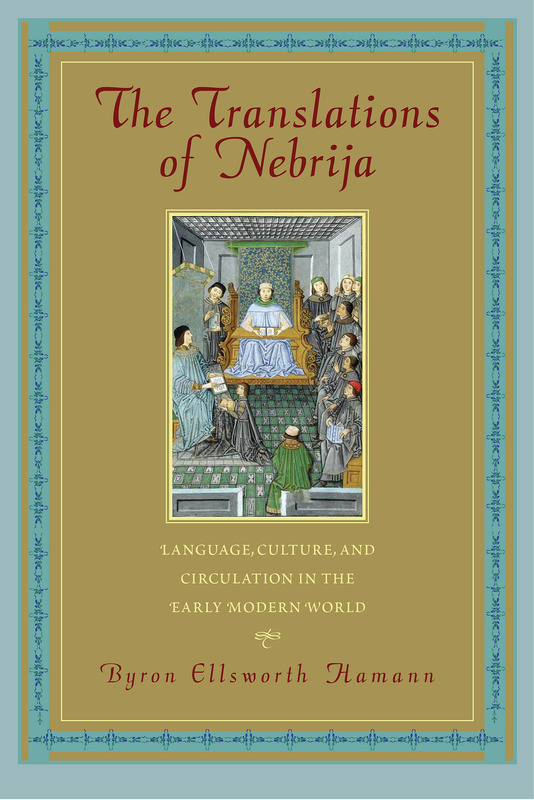The Translations of Nebrija
Language, Culture, and Circulation in the Early Modern World
University of Massachusetts Press
In 1495, the Spanish humanist Antonio de Nebrija published a Spanish-to-Latin dictionary that became a best seller. Over the next century it was revised dozens of times, in nine European cities. As these dictionaries made their way around the globe in this age of encounters, their lists of Spanish words became frameworks for dictionaries of non-Latin languages. What began as Spanish to Latin became Spanish to Arabic, French, English, Tuscan, Nahuatl, Mayan, Quechua, Aymara, Tagalog, and more.
Tracing the global influence of Nebrija's dictionary, Byron Ellsworth Hamann, in this interdisciplinary, deeply researched book, connects pagan Rome, Muslim Spain, Aztec Tenochtitlan, Elizabethan England, the Spanish Philippines, and beyond, revealing new connections in world history. The Translations of Nebrija re-creates the travels of people, books, and ideas throughout the early modern world and reveals the adaptability of Nebrija's text, tracing the ways heirs and pirate printers altered the dictionary in the decades after its first publication. It reveals how entries in various editions were expanded to accommodate new concepts, such as for indigenous languages in the Americas—a process with profound implications for understanding pre-Hispanic art, architecture, and writing. It shows how words written in the margins of surviving dictionaries from the Americas shed light on the writing and researching of dictionaries across the early modern world.
Exploring words and the dictionaries that made sense of them, this book charts new global connections and challenges many assumptions about the early modern world.
Tracing the global influence of Nebrija's dictionary, Byron Ellsworth Hamann, in this interdisciplinary, deeply researched book, connects pagan Rome, Muslim Spain, Aztec Tenochtitlan, Elizabethan England, the Spanish Philippines, and beyond, revealing new connections in world history. The Translations of Nebrija re-creates the travels of people, books, and ideas throughout the early modern world and reveals the adaptability of Nebrija's text, tracing the ways heirs and pirate printers altered the dictionary in the decades after its first publication. It reveals how entries in various editions were expanded to accommodate new concepts, such as for indigenous languages in the Americas—a process with profound implications for understanding pre-Hispanic art, architecture, and writing. It shows how words written in the margins of surviving dictionaries from the Americas shed light on the writing and researching of dictionaries across the early modern world.
Exploring words and the dictionaries that made sense of them, this book charts new global connections and challenges many assumptions about the early modern world.
This is a spectacularly imaginative book. Rarely does one find sweeping cultural ideas, ideas of global significance, warranted by bibliography so specific; rarely is such sophisticated book history written so clearly and enthusiastically.'—Michael Adams, author of Slang: The People's Poetry
'Art historian Hamann presents a fascinating work tracing the origin and impacts of a Castilian Spanish dictionary by Antonio de Nebrija, first published in 1495 and a model for other bilingual and trilingual dictionaries in both hemispheres. . . . Issued in the publisher's 'Studies in Print Culture and the History of the Book' series, this work is a highly readable treatise on intercultural translation. Highly recommended.'—Choice
'Hamann has written an innovative and provocative book that deserves attention. . . . The Translations of Nebrija showcases his wide-ranging interests and training in anthropology, indigenous languages, history, and art history and makes me excited about his future, pathbreaking scholarship.'—Hispanic American Historical Review
Byron Ellsworth Hamann is assistant professor in the Department of History of Art at Ohio State University.





